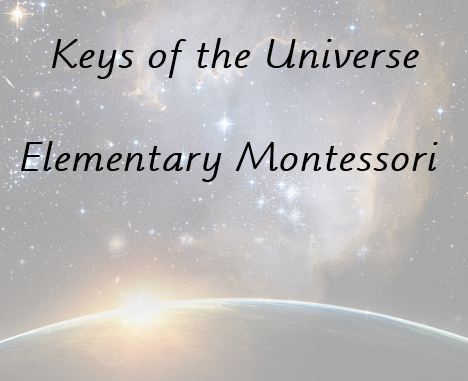It is so great to see more information on elementary Montessori spreading across the internet :)
There are differences between AMS and AMI and other Montessori organizations; unfortunately AMI's stance of keeping themselves to themselves has allowed a proliferation of information on Montessori to spread that is not entirely "the complete picture".
One of those differences is in regard to the continuum or division of the elementary age.

Many Montessori schools (and training centers) divide up the elementary into lower and upper elementary - and the most readily accessible albums for homeschoolers are divided thus; however the presentations and materials used are the same and should not be arbitrarily divided - I've seen so many album options for this age group that become too much "curriculum" and not enough "fulfilling the needs of the child, encouraging independent research, and building community".
Just something to think about when we say "this work is only for upper elementary" when you have a 7 year old KEENLY interested and doing independent research on that very topic that surpasses what we would typically give to an upper elementary student.
At elementary, we want to give the most pertinent, necessary information; give them their place in human history through the key timelines; spark imagination and intrigue; so that they go off and discover new insights on their own, in community, and find their places in our society, in history. It looks chaotic, but if they are receiving the keys, allowed time to explore on their own, having certain amounts of outside expectations/requirements to fulfill, creating their own materials that are above and beyond the keys, and are truly going deep with their work, then we have a true elementary environment :) because then we have a community (which leads to the peace education and other aspects that we desire, without having to use a "curriculum" to get there).
My concern with splitting 6-12 to 6-9 and 9-12 is that we want to give too much, and the children are left with less to discover on their own; there will be less community-building; fewer opportunities for conflict resolution; fewer opportunities for self-planned Goings-Out (student planned field trips for a small group of children exploring a particular field of interest); less opportunity for building self-confidence and study skills;
Practically speaking, many schools may NEED to divide into 6-9 and 9-12; but then each classroom should have the complete set of elementary materials (and training) so that the children can be where they need to be at any given age, without that arbitrary division that will only hinder growth.
However, Montessori teachers who have a full class of children ages 6-12 find that they a true community and the children really teach each other, with the children having more freedom of movement within the continuum so that they can go back and forth as needed without worry of "being at the wrong level."
In our homeschools, the continuum should definitely be maintained, without artificial breakages; especially if you have children across age spans - otherwise you'll give up on Montessori before you really get into it.
I choose AMI elementary because of this continuum. I have the complete picture for the elementary range and my son moves along where he needs to be.
I know that if I had used the 6-9 and 9-12 albums available, we would be "too structured" and our love of learning would be entirely killed, given our family situation and circumstances. I still look at those albums once in a while, but we almost never use any of the presentations or "assignments" in them because either my son already thought of that work himself (as an extension) or it is superfluous to our family and life goals.
So I keep coming back to my AMI albums, and trusting them more and more each day, with each passing moment.
The albums I use are available through
Keys of the Universe.
 The glue doesn't tend to be terribly strong on abacus, so you can wiggle out one leg removing it from the metal rods and the wood rod across the top.
The glue doesn't tend to be terribly strong on abacus, so you can wiggle out one leg removing it from the metal rods and the wood rod across the top.





























